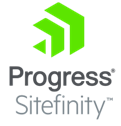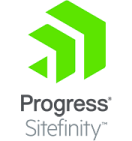Personalisation
Tailors digital experiences to individual users.
Scalability
Efficiently manages growing amounts of content and traffic.
Security
Robust security features protect sensitive data.
Sitecore CMS is a robust enterprise-level content management system (CMS) built on the ASP.NET framework, renowned for its extensive capabilities in managing digital content and personalised customer experiences.
Initially launched in 2001, Sitecore has evolved significantly over the years, adapting to the changing digital landscape and expanding its features to support a wide range of digital marketing tools and integrations.
The platform facilitates the creation and management of dynamic websites and integrates digital marketing features, allowing businesses to deliver tailored content to users and analyse customer interactions for more strategic marketing efforts.
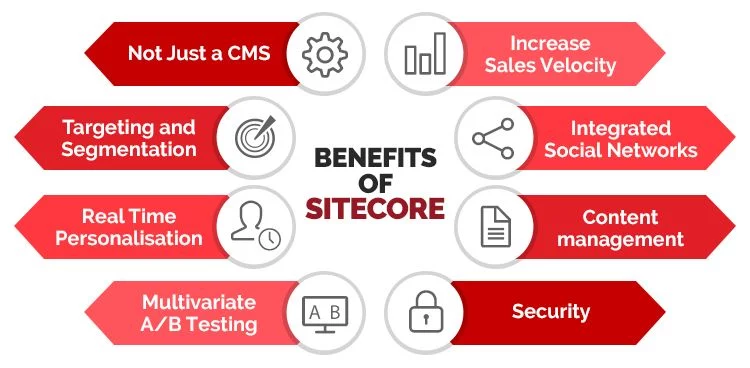
The history of Sitecore CMS is marked by continuous innovation and growth.
Developed by a Danish company, Sitecore started as a simple CMS and has transformed into a comprehensive digital experience platform (DXP). Over the years, it has seen numerous upgrades, each adding new functionalities and enhancements. These upgrades have focused on improving user interface, analytics, marketing automation, and cloud capabilities, reflecting Sitecore’s commitment to staying at the forefront of CMS technology.
Sitecore CMS offers several benefits that make it a preferred choice for many global organizations.
Its ability to provide a personalised user experience is one of its standout features, enabling businesses to engage effectively with their customers. Sitecore’s scalability allows it to handle the demands of any size enterprise, and its security features ensure that business and customer data are protected.
The platform supports multilingual content and multi-site management, making it ideal for global operations. Moreover, the integration capabilities with various digital tools enhance its functionality, allowing for seamless digital experiences across different channels.
Tailors digital experiences to individual users.
Efficiently manages growing amounts of content and traffic.
Robust security features protect sensitive data.
Supports global operations with ease.
Seamlessly works with CRM systems, analytics tools, and more.
The Sitecore Content Editor is a powerful tool within the Sitecore CMS that allows for the management and organisation of website content in a hierarchical structure.
Designed for content managers and editors, this interface provides a comprehensive view of the site’s content tree, enabling users to navigate through and manage the site’s structure and content with ease.
The Content Editor is known for its flexibility, allowing users to create, edit, and delete items, which can be anything from simple text content to complex multimedia elements.
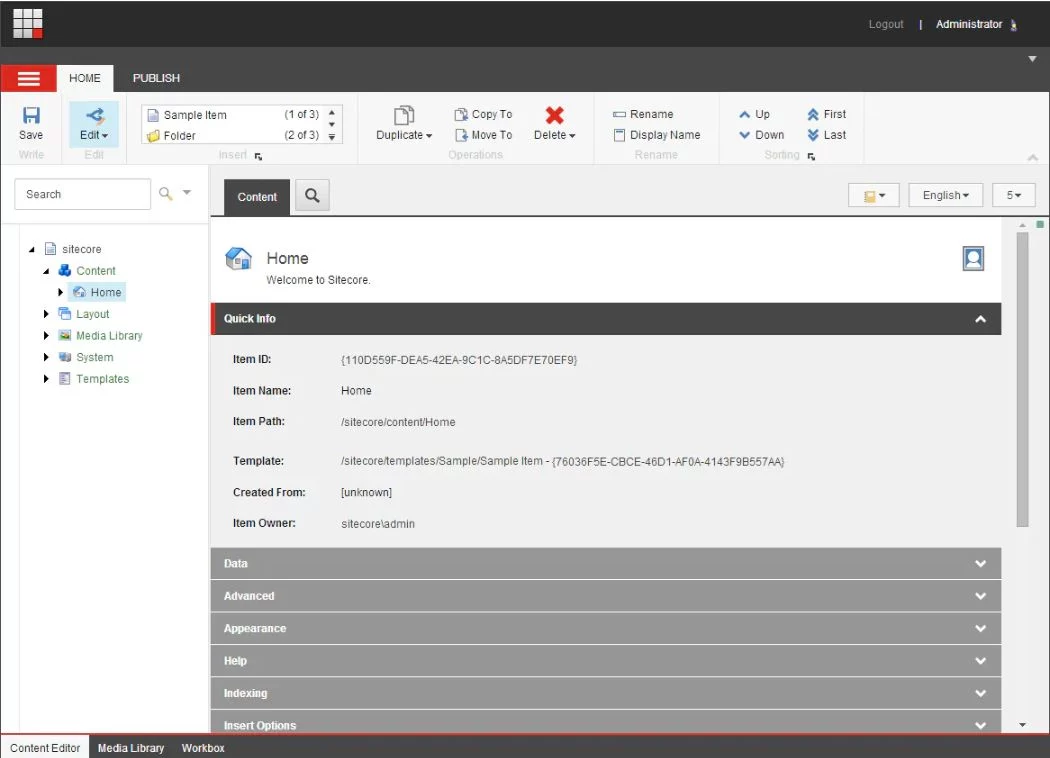
On the other hand, the Sitecore Experience Editor is a more visually oriented interface that allows marketers and content editors to edit content directly within the context of the website.
This on-page editing tool makes it easy to see how changes will look in real-time, enhancing the ability to create personalised customer experiences. The Experience Editor simplifies the process of applying personalisation rules and testing different content variations, directly impacting how content is presented to different user segments.
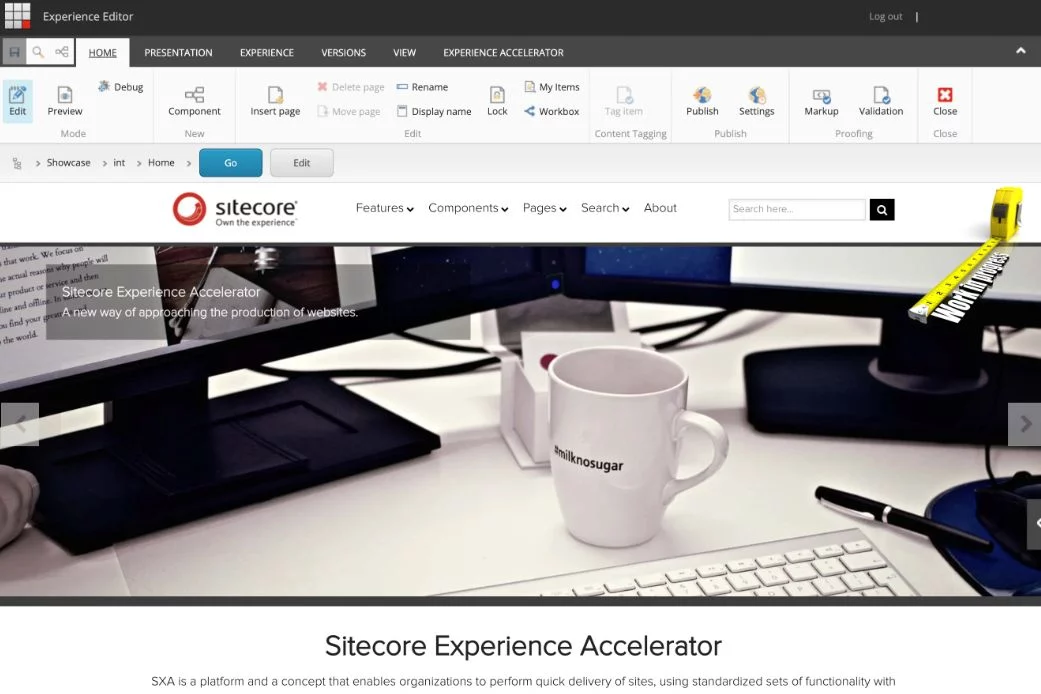
Using the Sitecore Experience Editor, marketers can:
Together, the Content Editor and Experience Editor in Sitecore provide a comprehensive suite of tools for managing and personalising digital content, catering to both the technical and creative aspects of content management.
Sitecore offers a comprehensive suite of DXP solutions and products designed to enhance digital experiences across various channels.
The Sitecore Web Experience Manager (WEM) serves as the foundation of these platforms, providing robust content management capabilities that enable organisations to create, manage, and optimise their digital content with ease.
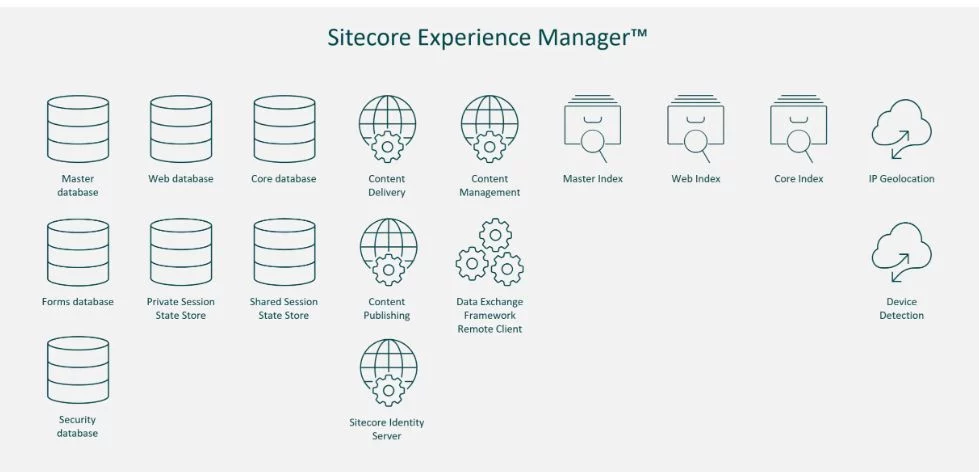
This system is particularly known for its user-friendly interface, mirroring a traditional Windows desktop UI, which facilitates quick onboarding and efficient use of the platform’s extensive features for marketing and content management.
The Sitecore Experience Platform (XP) elevates the capabilities of the WEM by integrating cutting-edge marketing automation tools. This includes personalisation, analytics, A/B testing, and the ability to launch comprehensive marketing campaigns.
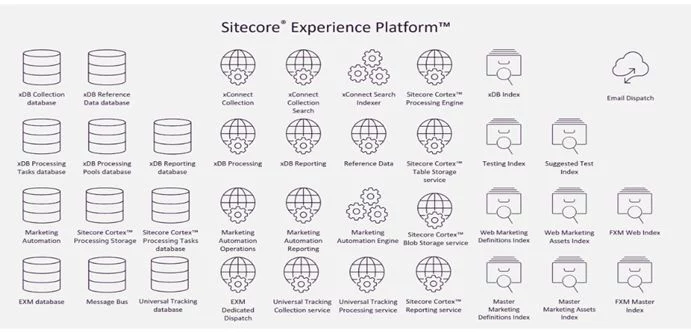
Sitecore XP is designed to collect and analyse customer interaction data from both digital and offline sources, allowing businesses to refine and personalise content, thereby continuously enhancing its relevance and impact.
This suite is ideal for organisations seeking an integrated solution for managing digital experiences across multiple channels.
Sitecore Commerce, another key component, extends the platform’s capabilities into the e-commerce domain.
It enables merchants to deliver fully personalised shopping experiences, covering everything from customer account management and order processing to real-time adjustments in promotions and pricing. This comprehensive e-commerce solution simplifies the management of digital retail operations, making it easier for businesses to engage customers effectively and drive sales.
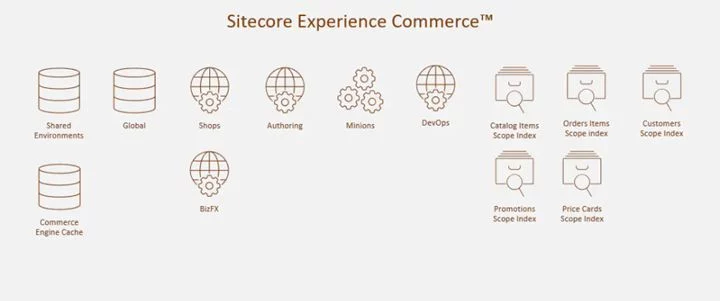
Sitecore Content Serialisation (SCS) is a crucial feature within the Sitecore ecosystem, designed to facilitate the serialisation, sharing, and deployment of content items across different environments. This system is integral for developers working on Sitecore solutions, as it ensures that content changes are consistently synchronised across various instances, much like code changes are managed through version control systems.
SCS supports the management of content items by converting them into a serialised format, typically YAML, which can then be easily transferred and tracked using standard version control tools like Git.
The process of serialising content in Sitecore involves exporting content items from the Sitecore database into a file system in a structured format. This capability is particularly beneficial during development and deployment phases, allowing for the smooth transition of content from local development environments to testing and production servers. It also facilitates collaboration among development teams by enabling them to share content updates efficiently and reliably.
The Sitecore CLI (Command Line Interface) and Sitecore for Visual Studio are tools that enhance the usability of SCS by providing interfaces for initiating serialisation commands directly from a command line or through a graphical interface within Visual Studio.
Version control is a fundamental aspect of content management in Sitecore SCS, ensuring that all changes to content items are tracked and can be reverted if necessary. This system allows developers to maintain a history of content changes, compare different versions, and restore previous versions when needed.
Integrating SCS with version control systems maintains the integrity and consistency of content across multiple Sitecore instances and supports best practices in software development lifecycle management.
Key Features of Sitecore Content Serialsation
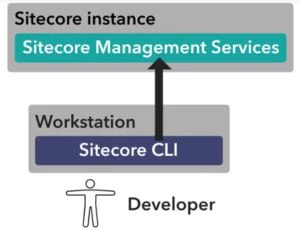
Sitecore excels in Web Content Management (WCM), providing a robust platform for creating, managing, and delivering web content.
The WCM capabilities of Sitecore are designed to support dynamic websites, enabling content creators and marketers to maintain up-to-date web presences with ease. The system allows for the creation of responsive and personalized content that adapts to different user profiles and devices, enhancing the user experience and engagement.
In addition to web content, Sitecore also offers efficient Document Management solutions.
This feature allows organizations to store, manage, and retrieve documents within the same environment as their web content. Integration with Microsoft Office applications simplify the process of editing and managing documents directly within Sitecore, ensuring that all content types are handled securely and efficiently.
Digital Asset Management (DAM) is another critical component of Sitecore’s content management capabilities.
The DAM system in Sitecore organizes digital assets such as images, videos, and documents, making them easily accessible for use across various parts of the website and marketing campaigns. This integration ensures that assets are optimized for delivery, maintaining high performance and compliance with digital standards.
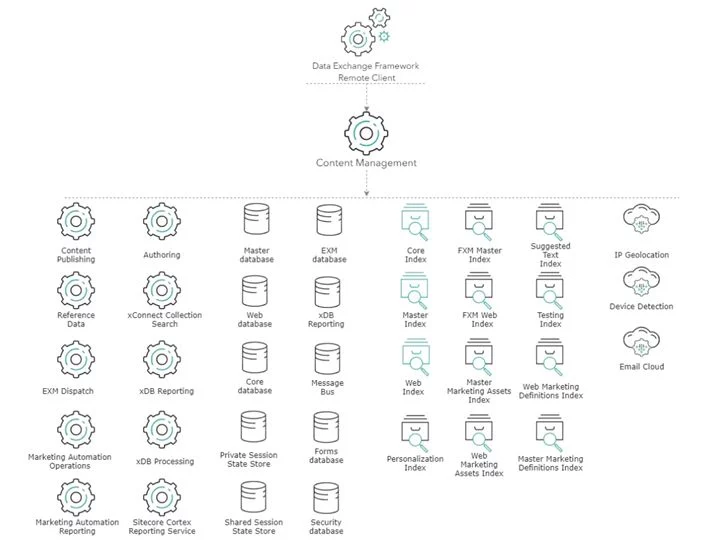
Overall, Sitecore provides a complete suite of tools for managing all types of content, from web pages to digital assets, all within a single integrated platform. This streamlines the content management process and enhances the ability to deliver tailored content experiences to different audience segments.
Sitecore xDB, the Experience Database, is a pivotal component of Sitecore’s customer intelligence capabilities.
It collects and aggregates customer interactions from all touchpoints, providing a comprehensive view of the customer journey. This data is crucial for creating detailed customer profiles, which enables marketers to deliver highly personalized experiences.
The xDB’s robust analytics tools identify trends and patterns in customer behavior, facilitating more informed marketing strategies and decisions.
Omnichannel marketing is another area where Sitecore excels, offering seamless customer experiences across all channels.
Whether it’s web, mobile, email, or in-store interactions, Sitecore ensures that every touchpoint is integrated, providing a consistent and unified customer experience. This capability is essential for businesses aiming to meet the modern consumer’s expectations for a cohesive brand experience, regardless of how or where they engage with the brand.
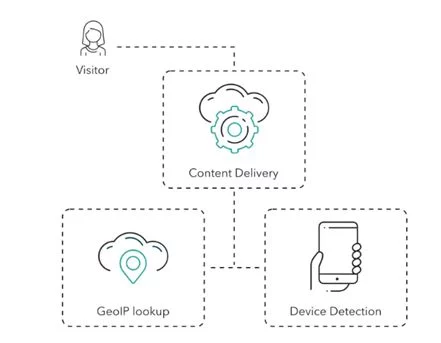
Personalisation and automation are at the heart of Sitecore’s marketing technology stack.
Sitecore uses real-time data and machine learning to automate content personalisation, ensuring that each user encounter is tailored to individual preferences and behaviors. This approach not only enhances user engagement but also optimises the effectiveness of marketing campaigns.
Sitecore also offers powerful marketing automation capabilities that let you design and run sophisticated marketing campaigns. These tools streamline your digital marketing efforts, helping you work smarter and drive better results.
Integration Capabilities of Sitecore:
These advanced features underscore Sitecore’s capability to manage content and drive comprehensive digital marketing strategies through deep customer insights and integrated experiences across all platforms.
Implementing a Sitecore project requires careful planning and execution to ensure that the platform meets the specific needs of an organisation.
The process typically begins with a detailed analysis of the business requirements, followed by the design of the architecture and the setup of the development environment.
Key considerations during the planning phase include scalability, security, and integration with existing systems. A phased rollout is often recommended, starting with a pilot project that can be scaled up based on feedback and performance metrics.
Customising Sitecore to cater to specific industries involves tailoring its features to meet industry-specific requirements. For instance, in healthcare, ensuring compliance with regulations such as HIPAA is crucial, which might involve customising security features and data handling processes.
In retail, on the other hand, integrating Sitecore with e-commerce platforms and CRM systems can enhance the shopping experience by providing personalised content and offers based on customer behavior and purchase history.
Key Steps in Sitecore Implementation:
Migrating legacy data and systems to Sitecore is a critical component of many implementation projects.
This process involves mapping the existing data structure to the Sitecore content tree, ensuring that all data is transferred accurately and efficiently. Tools and scripts may be developed to automate parts of this process, particularly when dealing with large datasets.
Optimising Sitecore for marketing and customer experience is an ongoing process that involves leveraging Sitecore’s analytics, personalisation, and automation tools. Continuous monitoring and tweaking of these features help in refining the strategies to better engage customers and achieve marketing objectives.
This might include A/B testing of content, segmentation of the audience for targeted marketing, and integration with analytics tools to measure performance and ROI.
Overall, implementing and customising Sitecore CMS is a comprehensive process that requires a strategic approach tailored to the specific needs of the business and its industry. Effective implementation not only enhances the customer experience but also provides powerful tools for marketers to manage and optimise digital strategies.
Adhering to best practices for content management in Sitecore is essential for maintaining an efficient and effective digital presence.
One key practice is the regular use of the Sitecore Content Editor and Experience Editor to ensure content is consistently updated and relevant.
For scalability, structure content into modular, reusable components and templates that can adapt as needs change. Implement a rigorous approval workflow to maintain quality and consistency by reviewing all content before publishing.
Best Practices for Content Management in Sitecore:
Troubleshooting common issues in Sitecore CMS often involves addressing problems related to configuration, performance, and user errors. Common issues include slow loading times, difficulties with content publishing, or unexpected behavior in custom modules.
To effectively troubleshoot these issues, Sitecore administrators should utilise the Sitecore logs and debugging tools to identify the root causes. Engaging with the Sitecore community and support forums can also provide insights and solutions from other experienced users and developers.
Performance optimisation in Sitecore is another critical area, focusing on enhancing the speed and responsiveness of the platform.
This can be achieved by optimising the database, implementing caching strategies, and minimising the use of resource-intensive custom scripts. Regularly updating the Sitecore platform and its modules with the latest patches also helps in maintaining optimal performance and security.
Key Areas for Troubleshooting and Optimisation:
Following these best practices and being proactive in troubleshooting and optimisation allow organisations to ensure that their Sitecore CMS remains a powerful and secure tool for managing their digital content and enhancing their overall online presence.

From commercial companies to government bodies striving to elevate their online presence, Websparks presents an unparalleled opportunity to unleash the full capabilities of the Sitecore Experience Platform.
As an esteemed Sitecore Solution Partner, our team wields deep expertise honed through years of hands-on experience. We’ve mastered the art of translating unique visions into dynamic digital realities that captivate audiences.
From personalised content delivery strategies that resonate with your target markets to seamless omnichannel experiences that foster consistent engagement across all touchpoints, our approach goes beyond mere websites – we craft immersive digital journeys.
Our proven track record speaks for itself, with successful deployments for renowned organisations such as SportsSG, ActiveSG, SkillsFuture, and MUIS – a testament to our ability to deliver exceptional results.
By aligning with Websparks, you gain access to the full breadth of Sitecore’s cutting-edge capabilities, propelling your organisation to the forefront of innovation. We’ll work tirelessly to craft compelling experiences that elevate your brand, outshining competitors and leaving an indelible impression on your audience.
Contact us today to schedule a consultation, and let our seasoned experts immerse themselves in your unique requirements. Together, we’ll forge a tailored solution that catalyses engagement, fosters loyalty, and unlocks new realms of success.
